Kells Ireland: Kells Abbey where the Book of Kells was found
Nestled in the heart of Ireland’s Boyne Valley lies the historic town of Kells. Filled with ancient ruins and rich cultural heritage, Kells is a must-see destination for anyone exploring the Emerald Isle. But beyond its historical significance, this charming town offers stunning natural scenery and warm hospitality that will make any visitor feel right at home. Kell’s is one of Ireland’s hidden secrets.
Kells derives from the Irish Ceanannas Mór, meaning ‘great residence`. Long before the coming of Christianity, Kells was a royal residence associated with the legendary Conn Céadchatach (Conn of the Hundred Battles) and Cormac mac Airt.
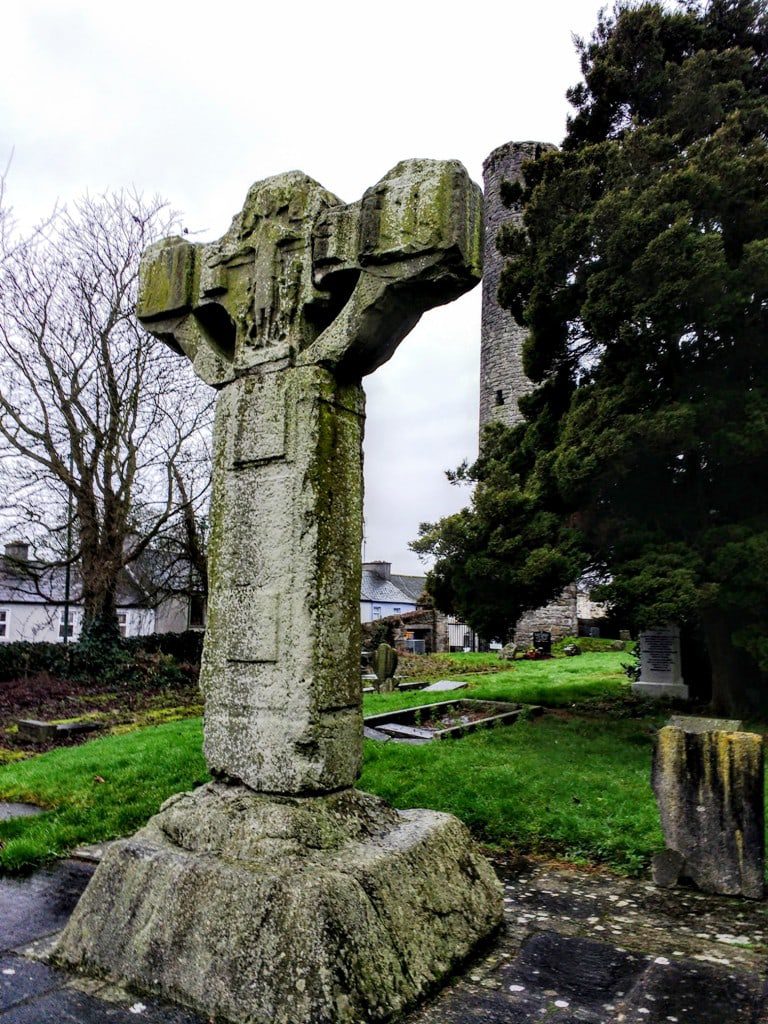
Most people have heard of the Book of Kells, which was found at Kells Abbey County Meath as it remains one of Ireland’s greatest mysteries as to where it was created. Some believe it was made in Iona Scotland at the monastery established by St. Colmcille. The 9th century period was rife with Viking attacks and it is believed that the monks relocated to Kells in Ireland perhaps bringing the book with them. The original Book of Kells is now kept in the Trinity Library in Dublin where every day a new page is turned.

Based in the Boyne Valley Region (birthplace of Ireland’s Ancient East), Kells is one of the reasons that Ireland is referred to as the Land of Saints and Scholars. It contributed heavily to keeping the light of learning alive in Europe during the Dark Ages. For this reason, Kells is on the tentative list to become a World Heritage Site with UNESCO. Don’t confuse Kells town and the Abbey of Kells for the Kell’s Priory located near Kilkenny.
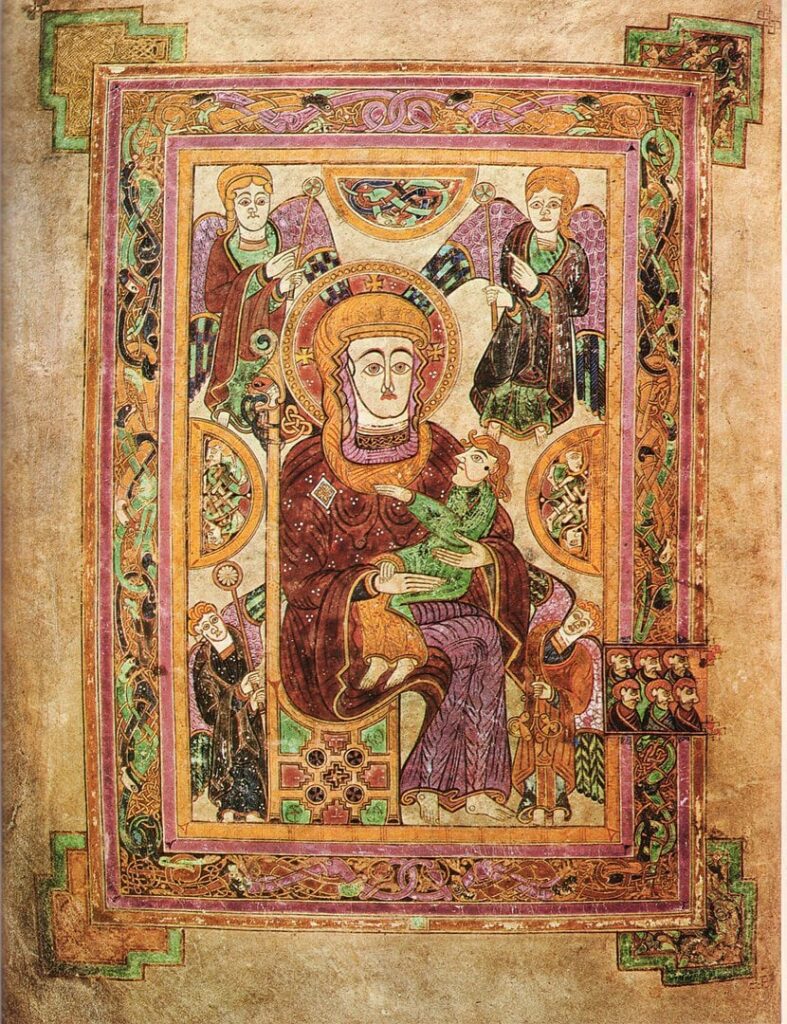

Kells Abbey
Kells Abbey is one of Ireland’s greatest monastic settlements. Gaelic Irish for Kells means “great residence,” and it was a royal residence much like the famous Hill of Tara. It wasn`t until the 6th century that Kells came to fame as a monastic settlement. St. Colmcille or Columba was granted Kells by the High King, Diarmuid McCarroll, who was a cousin of Colmcille and it is said that the two often fought and argued and the King gave Kells to him to make up for his actions against him.
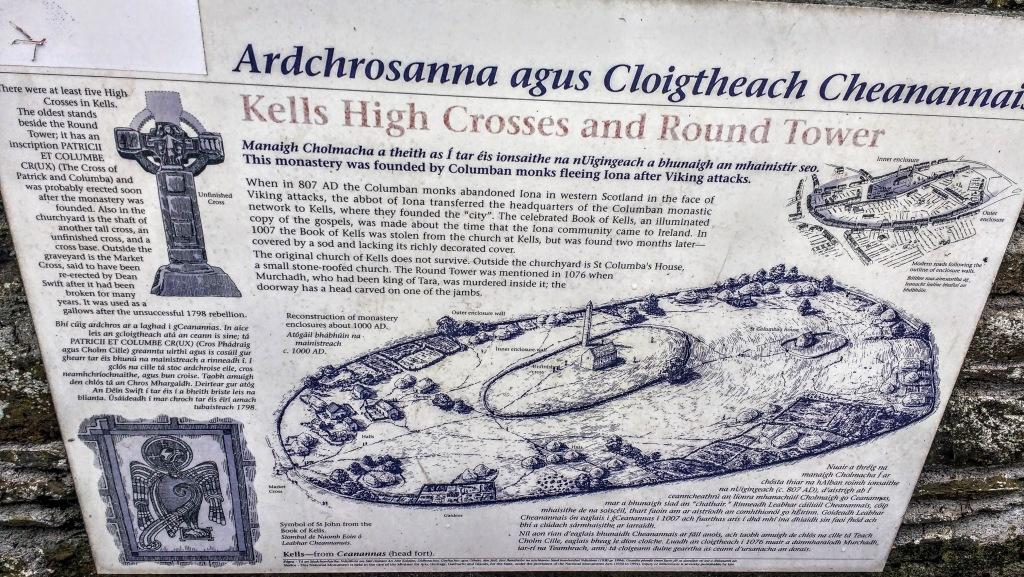
Kells is most famous as the original home of “Ireland`s finest treasure,” the Book of Kells. The book comprises the four Gospels of the New Testament; it is a masterwork of Western calligraphy with complex and extravagant illustrations and ornamentation. The manuscript is brought to life with figures of humans, animals, mythical beasts, Celtic patterns and vibrant colours. The actual Book of Kells is now far too valuable to be left in an unguarded location so you can see it at Trinity College in Dublin where it is on display year-round.

How to get to Kells
Situated in the heart of County Meath, Kells is the largest of the county’s towns. It is an easy hours drive from Dublin if you rent a car. You can get a bus from Dublin to Kells and the journey is around an hour and a half.
History of the Book of Kells
What is the Book of Kells?
The Book of Kells contains the four Gospels in Latin based on the Vulgate text St Jerome completed in 384 AD. The book is handwritten on vellum (prepared calfskin) with stunning illuminations and lots of gold leaf in a script known as “insular majuscule”.
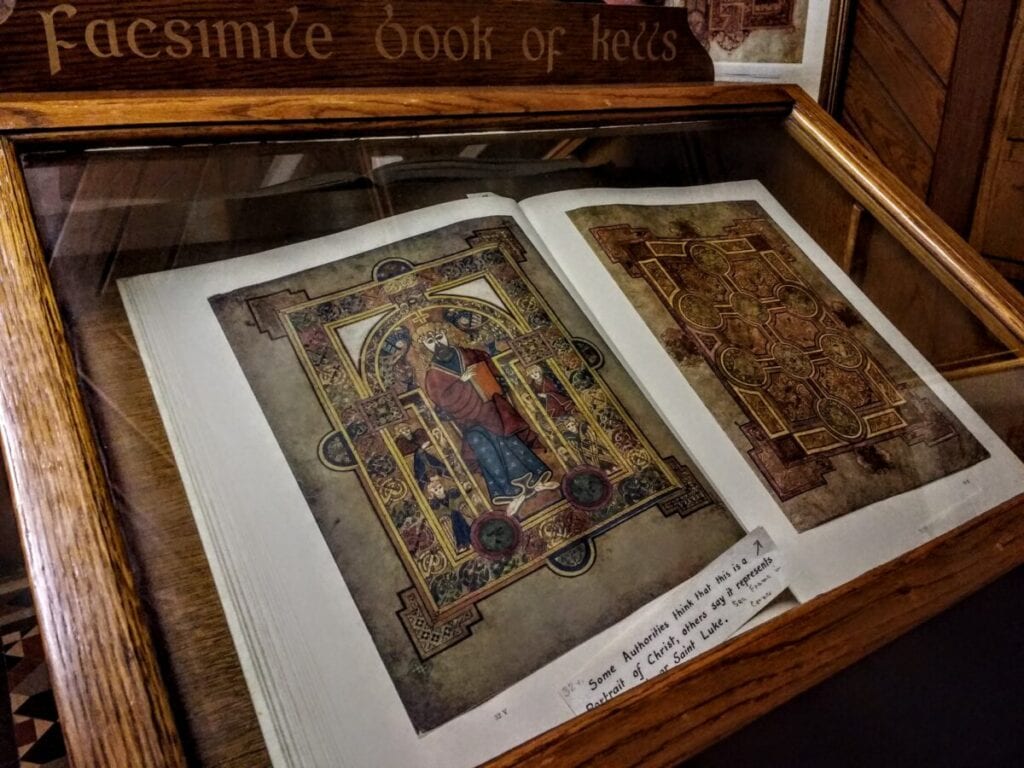
Where and when was the Book of Kells written?
The date and place of origin of the Book of Kells have attracted a great deal of controversy. The majority opinion now attributes it to the scriptorium of Iona (Argyllshire). A monastery founded around 561 by St Columcille on Iona is said to be where the book was started. In 806, following a Viking raid on the island which left 68 of the community dead, the Columban monks took refuge in a new monastery at Kells, County Meath.
The monastery in Kells flourished and was hailed by Columban monks as the “Splendour of Ireland”. During this time many items that are integral pieces of Irish history were created here from the stone crosses, the Round Tower, “Columcille’s House“ and the completion of the Book of Kells in the 9th century.
Why is the Book of Kells famous?
The Book of Kells is famous due to its incredibly lavish decoration that glorifies the life of Jesus with hand-painted images of plants, animals, symbols, Celtic knotwork and Christian iconography.
There are symbols of Matthew (the Man), Mark (the Lion), Luke (the Calf) and John (the Eagle); the opening words of the Gospels; the Virgin and Child; portraits of Jesus in scenes that tell the stories of his life. The Chi Rho introduces the story of the birth of Christ and is the most famous page in medieval art.

There are portraits of Matthew and John, but no portrait of Mark or Luke survives. Scholars assume these portraits might have been lost over time as it appears that 30 folios are missing.
Colmcille and Finnian (a fellow monk) were the unwitting contributors to the world’s first copyright laws. The two fought over the practice of transcribing the first complete bible brought to Ireland by Finnian. Colmcille copied the book in secret so it could be shared but this angered Finnian who brought the issue to the King at Tara. This resulted in Diarmuid ruling against Colmcille and stating on the record, “to every cow belongs its calf, to every book its copy.” Essentially every copy of the book made belonged to the owner of the original book.
The History of the Book of Kells
The Book of Kells is not used by academics and theologians as a historical record. The Annals of Ulster describe it as a treasure of the Western world and record that in 1006 it was stolen from Iona. In 1090, it was reported by the Annals of Tigernach, that relics of Columcille were brought to Kells from Donegal. These relics included ‘the two gospels’, one of them probably the Book of Kells, the other possibly the Book of Durrow.
In 1641 the Eleven Years’ War began after the confiscation of Irish-owned lands and the British beginning the Plantation of Ireland as they stole land from Catholic landowners. The war began with an attempted coup by a small group of Irish Catholic landowners. They planned to seize Dublin Castle and other strong points around the country and then issue demands for the free practice of the Catholic religion, equal rights for Catholics to hold public office and an end to land confiscations. The plot failed and the conspirators were arrested in Dublin.

The Irish rebellion triggered a civil war in England where the King and Parliament could not agree on who would command the army being raised to put down the rebellion in Ireland. This is turn led to the Royalists and Parliamentarians (Cromwell) formally declaring war on each other with the Scots siding with the English.
As a result of the war the church and Kell Abbey lay in ruins, and around 1653 the book was sent to Dublin where a few years later it reached Trinity College where it has been on display in the Old Library at Trinity College from the mid-19th century, and now attracts in excess of 500,000 visitors a year. Since 1953 it has been bound in four volumes. Two volumes can normally be seen, one opened to display a major decorated page, and one to show two pages of script.
Things to do in Kells Ireland
Visit the Abbey of Kells
Kells is located in the Boyne Valley, Kells near sites that play a large role in Irish history and legends. In this area, of County Meath you can visit Monasterboice, Newgrange, Loughcrew, Trim Castle and the Hill of Tara.
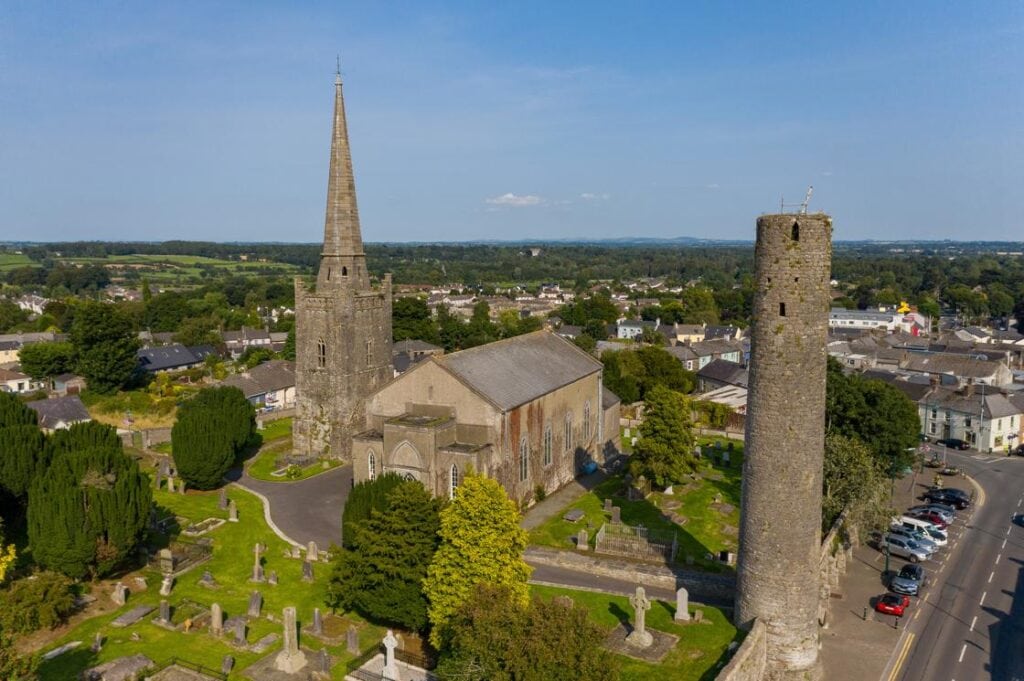
Generally, monastic settlements were surrounded by a circular boundary wall called a vallum, which acted as a frontier between the holy world within and the secular world outside. They often contained a church, graveyard, high crosses, and monk`s cells and from the late 10th century round towers were built to house surplus goods, act as a refuge and a belltower. Both Monasterboice and Kells have a vallum wall around them.
Kells Round Tower
Kell’s round tower is roofless and stands at over 25 metres and in 1076 Murchadh Mac Flainn, who was fighting for the High Kingship of Ireland, was murdered in the tower. The tower has five windows on the top floor rather than the usual four, overlooking the five roads leading into Kells.

St. Columbas Church
The first church at Kells was finished in 814 and in 878 the relics of St. Columba were relocated from Iona, which was now prospering. However, Kells itself was raided by the Vikings in 919, 950 and 969, and many times throughout the 11th century, The current church building (Church of Ireland) dates to 1778 and was renovated in 1965.
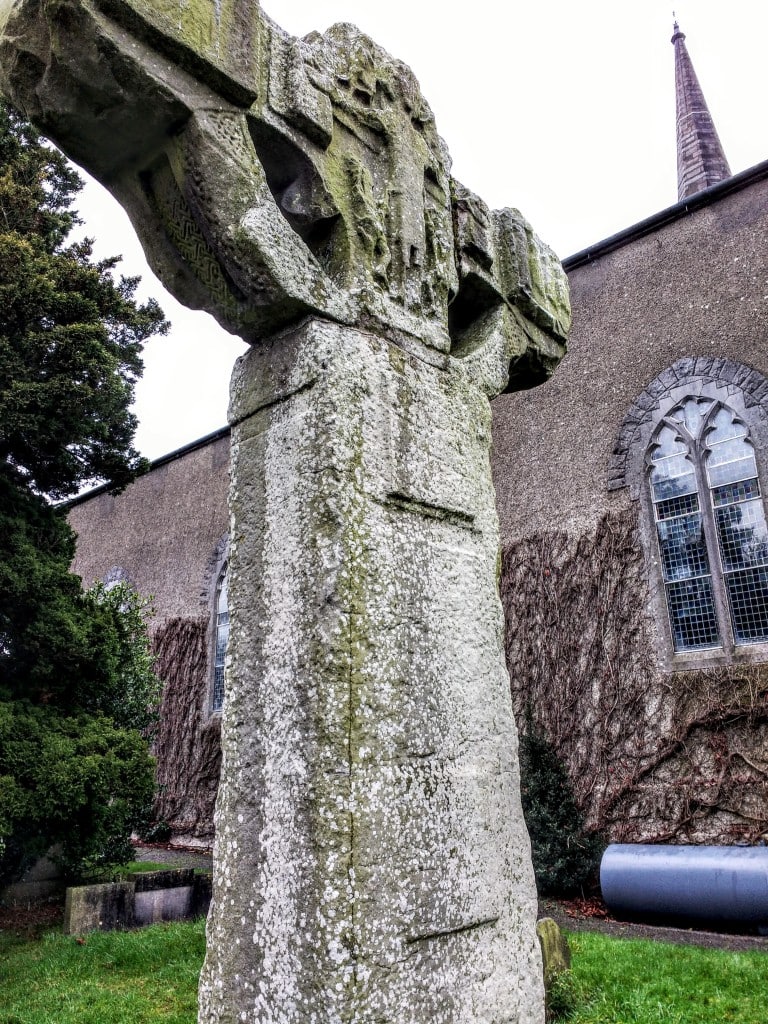
The only remaining portion of the medieval church still standing is the bell tower. The present church on the site was built in 1778. The spire on the bell tower was erected by the Earl of Bective, in 1783. The Church was altered in 1811, and again, in 1858, when the interior was re-ordered. In more recent times the Church roof was restored in 1965 and the interior re-decorated.

From surviving records, we know that the old church was a large cruciform structure with a chancel and tower. Several medieval high crosses may be found in the graveyard.
St Columb’s House
Nearby is St. Columb’s House, a 10th-century oratory that dates to the 10th century and it may have once housed the relics of St Columb which were brought to Kells in 878 and eventually moved to Downpatrick.
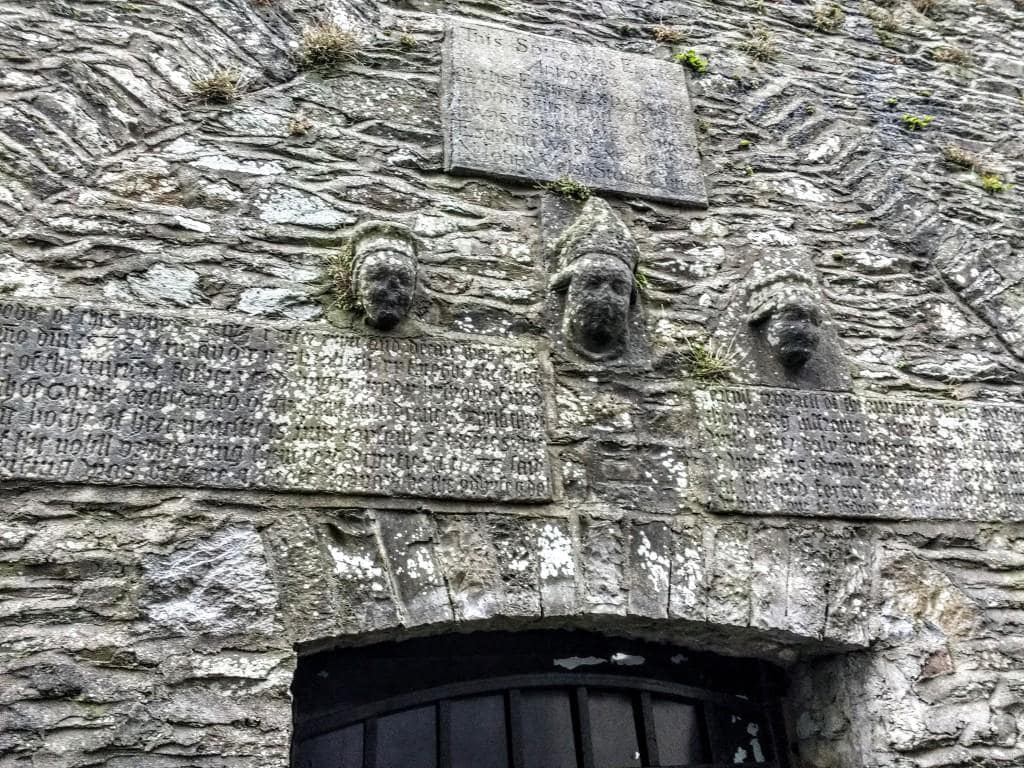
St. Columb’s House is a rectangular building with a high-pointed roof. Internally there was originally a high floor 1.5 m (5 feet) above the ground, but this is long gone. The loft of the house has three separate rooms and there was an underground passage that connected the house to the church and is mentioned in the Annals of the Four Masters.
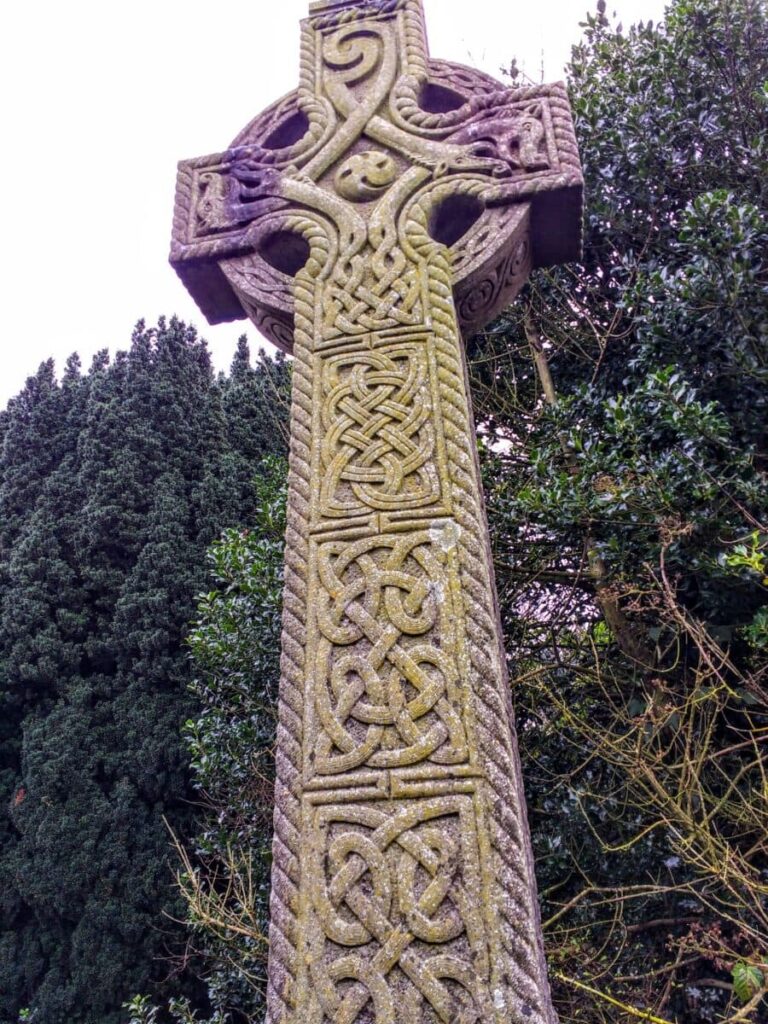
Celtic Crosses of Kells
Kells is also famous for its five 9th- to 10th-century Celtic high crosses. Three crosses and a cross base are located on the site itself, whilst the 9th-century “Market Cross” (originally at the abbey’s eastern gate) is now located in front of the old courthouse on the west side of the old courthouse, on the north side of the old Navan Road. Legend has it that it was damaged by Cromwellian soldiers and that it was used to hang participants of the 1798 rebellion.

The Market Cross of Kells, which dates from the 9th century and depicts scenes from the Old and New Testaments, can be seen at the junction of the Navan & Dublin roads and the Slane road in front of the Kells Heritage Centre. The round tower and high crosses are a National Monument of Ireland.
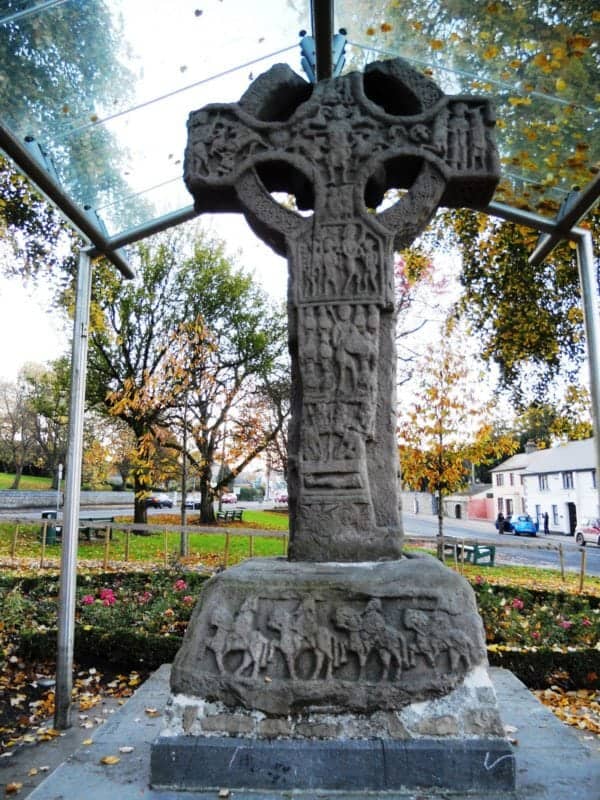
Visiting the town of Kells in Ireland and seeing the replica Book of Kells is an unforgettable experience that offers a glimpse into Ireland’s rich cultural and artistic heritage. The replica book is an exceptional example of medieval artistry, showcasing the skill and dedication of the scribes who painstakingly crafted the original manuscript.
The town of Kells is a charming and welcoming place, steeped in history and tradition, and offers a fascinating insight into Ireland’s past. Whether you are a history buff, an art lover, or simply someone looking for a unique and enriching travel experience, a visit to Kells and the Book of Kells is definitely worth adding to your itinerary.
Pin it to save it

